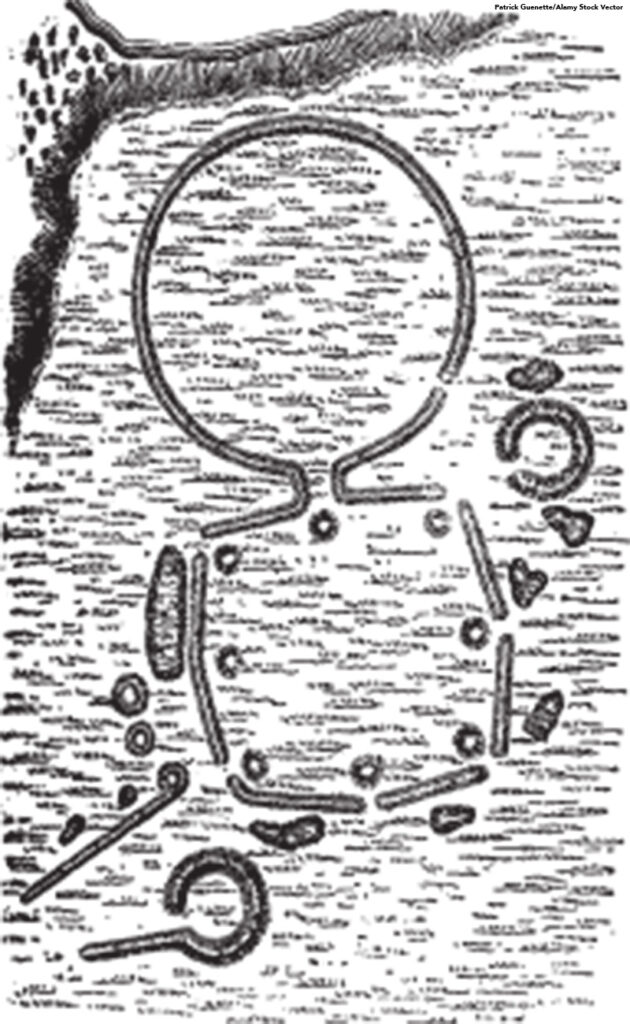
The United Nations Educational, Scientific and Cultural Organization (UNESCO) announced the addition of the Hopewell Ceremonial Earthworks to the list of World Heritage sites. The Hopewell Ceremonial Earthworks are made up of eight locations throughout southern Ohio. The earthworks are Ohio’s first World Heritage Site and one of only 25 sites in the United States.
How are World Heritage Sites Picked?
Countries worldwide submit sites for UNESCO to consider adding to the World Heritage List. There are currently 1,199 UNESCO World Heritage sites across 168 countries. The site must meet one or more of the World Heritage Selection Committee standards to be selected. These standards include “to represent a masterpiece of human creative genius” and “to bear a unique . . . testimony to a cultural tradition or to a civilization which is living or which has disappeared.” The site can be a natural place or built by people. However, it must have great universal value.
Where are the Hopewell Ceremonial Earthworks?

The eight Ohio sites recognized by UNESCO are located in the Ohio River Valley. They include several sites that are part of the Hopewell Culture National Historical Park, which the United States National Park Service manages. The park contains the High Bank Earthworks, Hopeton Earthworks, Hopewell Mound Group in Chillicothe, and Seip Earthworks in Bainbridge. The Ohio History Connection, a statewide history organization, manages the Octagon Earthworks in Newark, Great Circle Earthworks in Heath, and Fort Ancient Earthworks in Oregonia. All the structures are open to the public except for the High Banks Earthworks.
Who Were the Hopewell People?
In areas of North America, prehistoric Native Americans built thousands of earthen mounds, or earthworks. The earthworks were created between 1,600 and 2,000 years ago by many different peoples. Archaeologists classified the earthwork-building cultures of the Ohio River Valley as the Hopewell people.
The Hopewell people were farmers and traders who built huge burial earthworks in geometric shapes and sometimes in the form of animals. Archaeologists have discovered freshwater pearls, shells, and copper inside some of the Hopewell earthworks. Based on these finds, archaeologists believe that the Hopewell had trade networks that covered hundreds of miles. No one knows all the reasons why the Hopewell people built the earthworks. Some archeologists believe Hopewell communities across the region regularly came together at the earthworks for ceremonial purposes.
Why are the Earthworks Significant?
Even though we are still learning about the earthworks, scientists recognize that the enormous structures show the skills and knowledge of the early inhabitants of the Ohio River Valley. Earthen embankments, or thick walls made of clay, were formed into geometric shapes such as squares, circles, and octagons. Some embankments are 12 feet tall, and some of the largest mounds are over 1,000 feet across. These mounds are very precise, demonstrating the mathematical skills of the Hopewell people. Several sites also share designs of the same shape and size. For example, even though the earthworks at High Bank and Hopeton are 60 miles apart, their circles share the same diameter of 1,050 feet. Circles of the same diameter are also found at other earthwork sites.
The designs also show the Hopewell people had knowledge of astronomy. Many of the earthworks line up with the movements of the sun and moon. For example, the diagonal of the square earthwork at Hopeton aligns with the sunset on the summer solstice. Also, the parallel embankments that lead to the circle earthwork point to the sunset on the winter solstice.
Loaf or cone-shaped mounds over 30 feet tall are inside the geometric enclosures. These are not piles of dirt. They started as buildings made out of poles and bark with clay floors. Archaeologists believe the Hopewell people may have used the buildings for ceremonies and burials based on the items inside the mounds. After the Hopewell people were finished using the building, they disassembled it. They would then layer clay and sand on top of the site to create a mound. The mounds must have been very important to the Hopewell people because building such tall structures would have taken a long time. Some archaeologists estimate it would take over 2,000 dump truck loads of material to build one mound.
Is World Heritage Site Status Helpful?
Being on the World Heritage list allows organizations to access money to protect or repair the sites. These funds help ensure the site is maintained and protected for future generations of people from around the world to visit and study. In some cases, being on the World Heritage list increases tourism to the area, which helps the local economy. However, some people feel it brings too much attention. The added tourism could damage the site or the environment.
